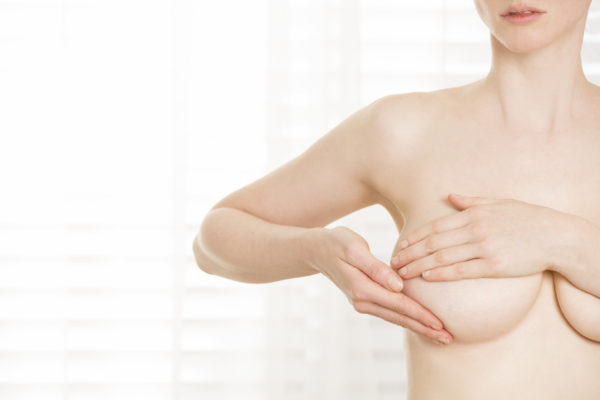Autologous Breast Augmentation or Reconstructions have been surgical procedures for some time. In fact, Autologous Fat Breast Augmentation has been written and defined by the American Society of Plastic Surgeons since 2011. Let’s say you are looking for an alternative to breast implants. But you want to improve your bosom. Then, you might want to investigate today’s topic concerning Autologous Fat Transfers for the Breast.
Augmentation The Natural Way: The Autologous Fat Transfer Procedure Uses Your Own Tissue
When you think about it, what could be better than using your own natural tissues in any type of surgery? Autologous Breast surgery is “a procedure in which the patient’s own fat is transplanted to the breasts…”

Altiora Reports New autologous fat transfer techniques for breast enlargement or reconstruction.
This might be done simply with liposuction or it could be “used along with treatment to expand the breast tissue before surgery And it can achieve up to a two-fold increase in breast size, according to a study in the Journal of the American Society of Plastic Surgeons (ASPS).”
ASPS Members Daniel Alexander Del Vecchio, MD, Boston, and Louis Paul Bucky, MD, Philadelphia, report that the procedure with breast expanders “builds on previous fat transfer techniques to provide excellent outcomes of breast enhancement surgery.
Dr. Del Vecchio’s report stated, “Pre-expansion to the breast allows for mega-volume (over 300 ccs) grafting with reproducible, long lasting results that can be achieved in less than two hours.”
Study of the Pre-Expansion Technique
In Step 1 of this type of Autologous fat transfer, the pre-expansion procedure provides extra room in the breast. In Step 2, the breast is “back-filled,” using the patient’s own lipo-suctioned fat.
The doctors wrote their recent report about using pre-expansion and autologous fat transfer in 46 breasts of 25 women. They had various goals for their surgery:
- Some patients simply wanted to increase their breast size.
- Others wanted to replace implants their traditional implants with their own tissue.
- Still, others wanted normal size and shape due to certain types of breast deformity.
On average, the doctors transplanted about 300cc into each breast.
The Critical Factor: Patient Evaluation
After six months, all of the women reported significant improvements in size and shape. On average, the treated breasts doubled in size.

Autologous Fat Transfer might improve the size and shape of your breasts.
Equally important, they developed with a “soft and natural…appearance and feel.” the researchers write. Likewise, magnetic resonance imaging scans revealed no cysts, masses or other abnormalities in any of the breasts.
However, the idea of breast fat transfer is not new. Recently, it has seen a resurgence with several plastic surgery groups reporting good results.
For something quite recent, Drs. Del Vecchio and Bucky believe pre-transplant breast expansion is an important technical advance. It provides increased space to be occupied by the patient’s own fat from the abdomen. Patients also used a vacuum device for a few weeks after the procedure, which may act as a “splint” to help promote healing.
From the study by Drs. Del Vecchio and Bucky, and from breast augmentation, let us move to a closely related topic, breast reconstruction. A research study was conducted last month by ASP Member Surgeon Joseph Disa, M.D. The results were excellent with excellent results, by ASPS Member Surgeon Joseph J. Disa, MD, and colleagues of Memorial Sloan Kettering Cancer Center, New York.
Autologous Breast Reconstruction: a Safe Alternative In Cases of Implant Failure
Sadly, some patients experience implant failure after breast reconstruction for mastectomy. What can these women do?
- When implant-based reconstruction fails, doctors have discovered that autologous reconstruction – using the patient’s own tissues can be a blessing.

She hides her sadness with Rose Petals. The autologous fat transfer might help her, even if she had implant failure.
- Recent studies prove it is safe.
- The research also proves Autologous Breast Reconstruction greatly improves patient outcomes, according to a recent study Plastic and Reconstructive Surgery, the official medical journal of the American Society of Plastic Surgeons (ASPS).
ASPS Member Surgeon Joseph J. Disa, MD, and colleagues of Memorial Sloan Kettering Cancer Center, New York stated, “Autologous breast reconstruction after failed implant-based reconstruction is associated with significantly improved patient satisfaction and quality of life.”
When Implants Fail, Opt for the Autologous Technique
Implants are the most frequent option for breast reconstruction after mastectomy. Doctors use them in about 80% of patients.
“But in some cases, the initial reconstruction fails, due to complications or other reasons. In this situation, some patients opt for the autologous technique…” The surgeon reconstructs the breast using the patient’s own tissue. They utilize a flap “obtained from a “donor site” in the abdomen.”
Dr. Disa and colleagues analyzed 137 women who underwent autologous breast reconstruction after failed implant reconstruction.
- In about three-fourths of patients, the initial reconstruction failed due to scarring around the implant. We call this condition capsular contracture and it causes pain or deformity.
- Other patients had infections or other implant-related complications.
- Still others in the group or were dissatisfied and depressed with the appearance of the reconstructed breast.
Typically, for these patients, the second reconstruction was performed about 3.5 years after their initial procedure.
The Numbers In the Research Study
Altiora wants you to know the most research was a small but significant study. Both breasts were reconstructed in 55 patients, for a total of 192 flaps.

We invite you to open a dialogue about autologous breast procedures, even if you have had breast cancer.
The doctors assessed the outcomes of the surgeries with the BREAST-Q questionnaire. This research tool evaluates various aspects of a patient’s quality of life after breast surgery.
Time, Patience and Overcoming Failure: BREAST-Q
The results suggested that autologous reconstruction on patients whose initial implants failed is a safe procedure. But the doctors wanted to know more than if it was safe. They wanted to know if the new technique yielded satisfaction to their patients.
What is the BREAST-Q?
The researchers used BREAST- Q questions to check the degree of satisfaction from the patients. This is a system of questionnaires and surveys used in scientific research to evaluate patient results. If you want to learn more about this method of evaluation, then visit this helpful online resource for all the details.
“The BREAST-Q has a modular, procedure-specific structure with scales that evaluate both satisfaction and quality of life. Psychometric evaluation reveals high reliability, validity, and responsiveness to surgical intervention across all scales. The BREAST-Q will help facilitate an evidence-based approach to the management of breast surgery patients.”
A Good Report Card for Autologous Reconstruction
Analysis of BREAST-Q responses showed “a high degree of satisfaction and quality of life” after autologous reconstruction.
“About one-fourth of patients filled out the BREAST-Q after both implant procedures. Significant improvements occurred in this group. Their answers indicated satisfaction with the appearance of the breasts, psycho-social well-being, and physical well-being of the chest.”
The women reported improved satisfaction with overall well-being on the BREAST-Q. Altiora points out that this was in spite of the soreness in the abdomen. This discomfort was related to the tissue donor site in the abdomen. (You know that is going to cause a little discomfort. Apparently, the patients understood that as part of the process of healing.)
Pros, Cons and Terrific Take-Aways
Let’s take a brief look at the pros and cons of implant vs. autologous reconstruction. Each procedure has advantages for breast reconstruction after mastectomy.

Learn the secrets of a better bust-line from Dr. Orlando Cicilioni at Altiora Plastic Surgery & Medspa. Is Autologous Breast Surgery an Option for you?
- On the one hand, breast reconstruction using the patient’s own tissues might create a more natural-appearing breast. Researchers have concluded optimistically, “There may be some additional challenges related to previous breast cancer treatment and reconstruction. They add, “The procedure has an acceptable complication rate.”
- On the other hand, patients typically find implant-based reconstruction is more widely available and less costly.
- In the end, Altiora Plastic Surgery & Medspa recommends you discuss both types of procedures with your plastic surgeon. We are publishing this blog just to highlight the current research, and definitely not to bring you a prejudged diagnosis. Both surgeries are safe and both provide good reconstructive outcomes.
A Look Beyond the Facts Into the Heart: the Autologous Fat Transplant Story
Researchers have a tendency to boil down results into procedures, results, and facts. Once in a while, it’s nice to use a little imagination. For example, imagine you are a woman who has suffered the pain and heartbreak of cancer and mastectomy.
Add to that the misery of implant failure with your breast reconstruction. Count up the physical and psychological suffering. Multiply it by three long years or more.
Then imagine your delight in discovering that new Autologous Fat Breast Reconstruction Procedures might be able to correct your situation. If just one such woman reads this blog about the research and gets help from it, then this article is worth its time and trouble. Thank you, as always for reading the blog from Altiora Plastic Surgery & Medspa.






